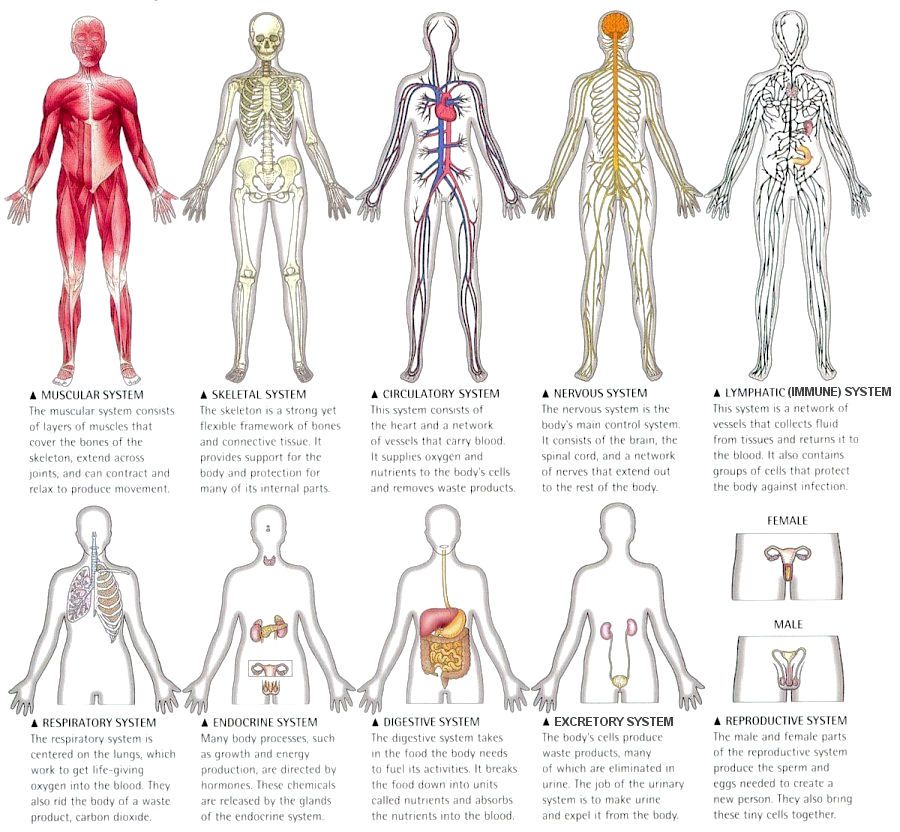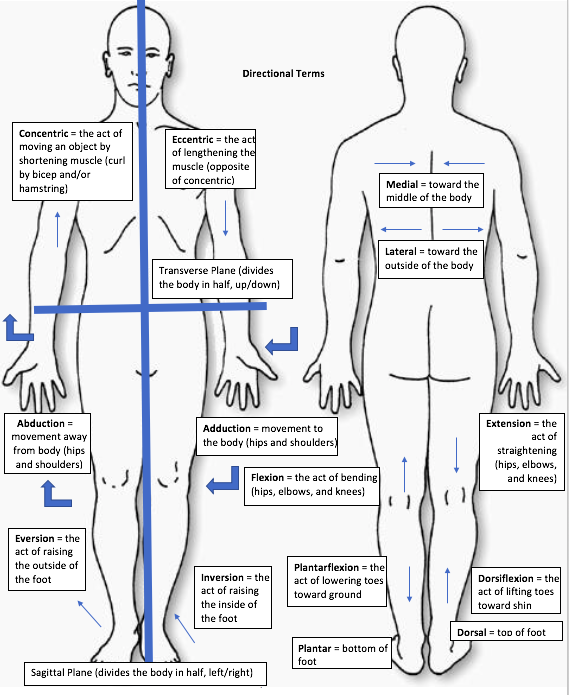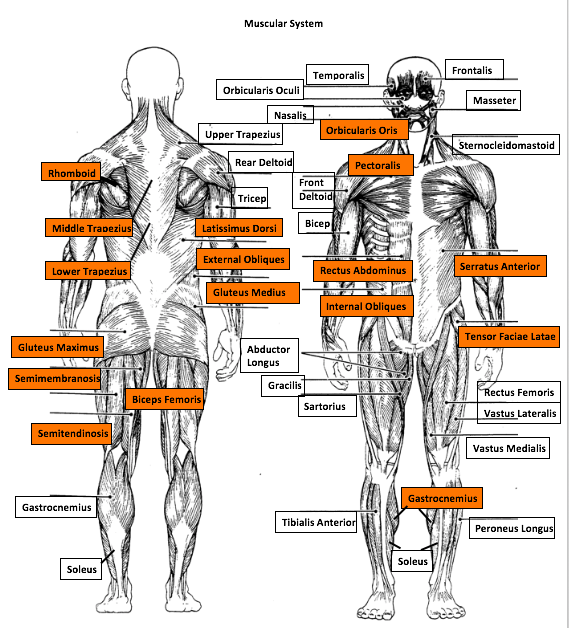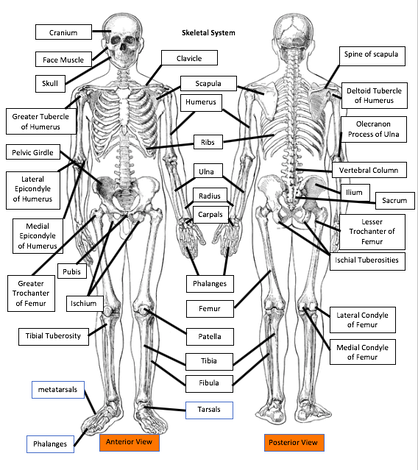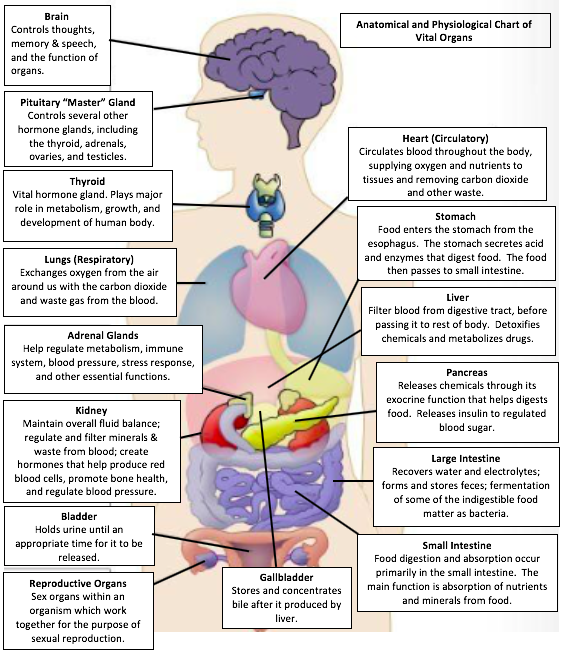Directional TermsDirectional terms are used to consistently describe the various areas of the body and the planes and ranges of motion the body performs. It is helpful to understand the directional terms as these concepts are used to communicate the locations of the body accurately, grow familiarity with the regions of the body, and develop total body physical activities to enhance the body's ability to perform the functions of daily life.
|
Muscle GroupsMuscle groups are responsible for the body's movement. When muscles contract (tighten) they bring the bones closer together, causing coordinated movement. It is helpful to understand the various muscle regions as this information can be used to ensure proper function, prepare balanced physical activity routines, and perform more controlled physical functions.
|
Skeletal SystemThe skeletal system provides the body its frame, protects vital organs, and produces blood cells. Bones are covered in a hard mineral shell composed mainly of phosphorous and calcium. It is helpful to understand the skeletal system as it provides information to prevent injury, design diverse physical activity routines, and understand the basics of human function.
|
Organs and GlandsOrgans and glands supply the body with the resources it needs to function, get rid of toxic material, reproduce, and survive. The various organs and glands below make up the other nine systems of the body (aside from the muscular and skeletal systems, although organs like the heart are also made of muscle). It is important to understand the various glands and organs as these are the foundations of human existence. Understanding how the eleven systems work and the various organs in them, provides the tools necessary to lead a healthy, balanced life. If we live in a way that caters to the needs of our organs, we will be happy and healthy, guaranteed. This requires knowing not only how organs function, but what resources they need to function and what substances are bad for them.
|
